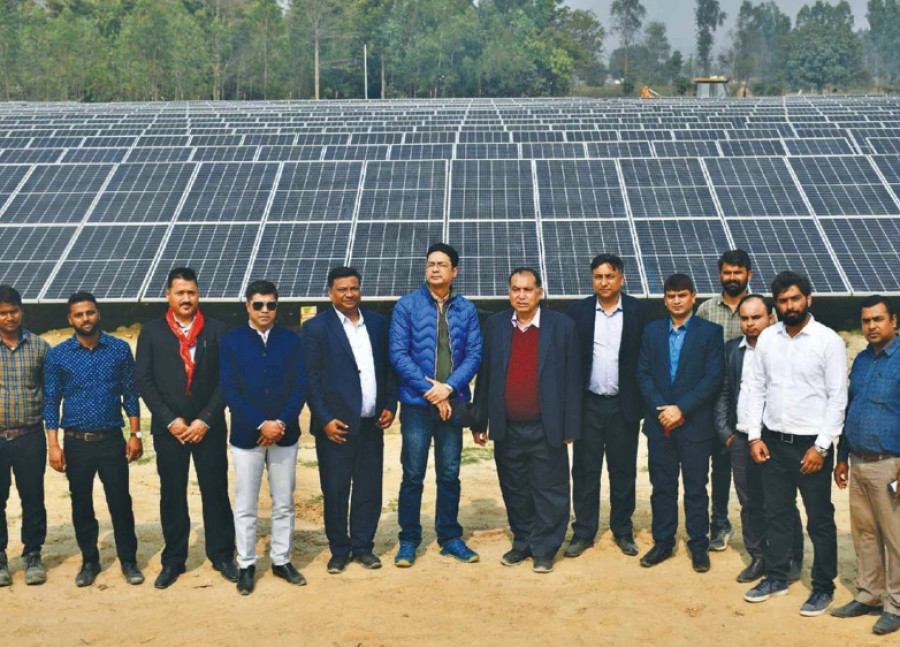Money
10 megawatts of solar power evacuated to national grid in Province 2
Nepal immediately needs at least 200 megawatts of energy to become self-reliant during the dry season and solar energy is the best option, experts say.
Ajit Tiwari
A Nepali private company has generated about 10 megawatts of solar power in the southeastern region of Dhalkebar, Mahottari of Province 2 where hydropower potential is almost nil and evacuated it to the national grid.
This is the largest solar power fed into the national grid by a private company till date.
On November 10, 2020, private producer, Ridi Hydropower Development Company, had evacuated 8.5 megawatts of solar energy to the national grid from its plant in Manigram, Rupandehi.
The Dhalkebar plant is spread over nearly 40 bighas [6.3 hectares] of land. The developer—Eco Power Development Company—had contracted the project to Kushal Projects Nepal under the design, supply, construction, operation and maintenance modality.
The developer said that the project was completed in a record duration of 7 months despite the Covid-19 lockdown. The power was evacuated to the national grid on February 18.
The solar energy has been sold to the Nepal Electricity Authority at Rs7.30 per unit. The total investment cost of the project is around Rs900 million.
Each solar panel covers an area of 2.22 square-meter. According to Kushal Projects, a total of 28,504 panels has been installed at the plant.
Sandeep Agrawal, managing director of Kushal Projects, said power generated from the sun would address the scarcity of energy during the dry season and reduce dependence on importing electricity.
From December to February—which are the dry months in winter—the country’s power generation drops due to a fall in water levels in the rivers as snow in the mountains doesn't melt.
In Province 2, there is no possibility for the development of hydropower projects. But the province has abundant sun energy that could be tapped, according to energy experts. As a result, a number of solar-powered energy projects are in the pipeline. Kushal Projects has already received solar projects in five more places in Nepal.
Energy mix of Nepal, which till date is dominated by hydropower, is expected to be more diverse in coming years with more private developers showing interest in installing solar plants in different locations.
In the fiscal year 2019-20, the Department of Electricity Development had awarded survey licences to various developers willing to install solar plants at 21 different locations within the country.
The combined installed capacity of these 21 solar plants will be 317.14 megawatts which will account for almost 70 percent of the total installed capacity of 56 solar plants that have received survey licences from the department till date.
The largest among them is 120 megawatts Solar PV Project Dhalkebar in Mahottari district owned by Chaudhary Group, one of the biggest business houses of the country. Similarly, the second and third largest plants are 50 megawatts Solar PV Project Barju in Sunsari and 30 megawatts Parwanipur Solar Farm in Parsa—both owned by the same group, according to the department.
Agrawal said that they have been working as per the government’s energy mix plan that aims to produce 15 percent of energy through solar power.
According to experts, Nepal immediately needs at least 200 megawatts of energy to become self-reliant during the dry season and solar energy is the best option.
Province 2 had also announced to install 50 megawatts of solar energy in its first policy and programme in 2018-19. Although the province government’s plan has not moved forward, for the construction of solar energy, the private sector is aggressively investing in the solar plants.




 14.12°C Kathmandu
14.12°C Kathmandu














